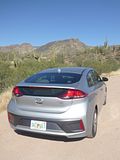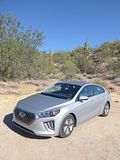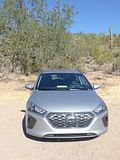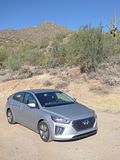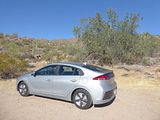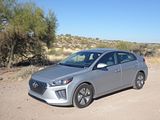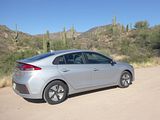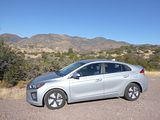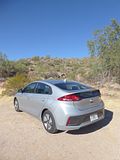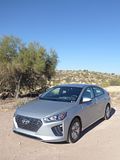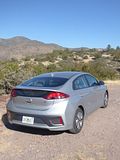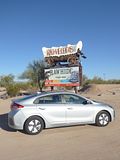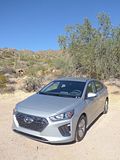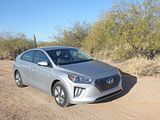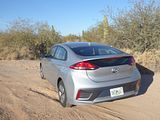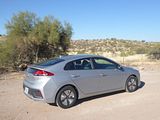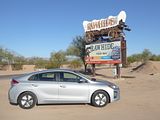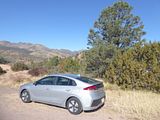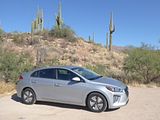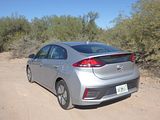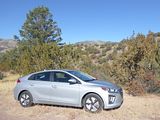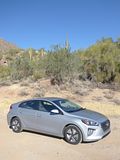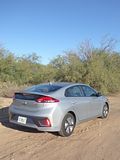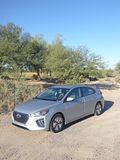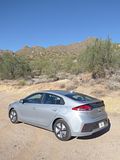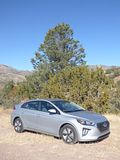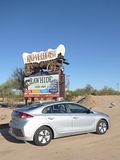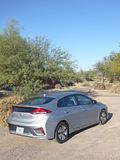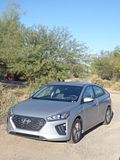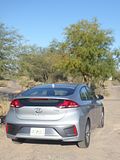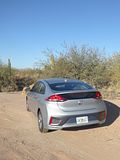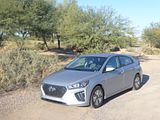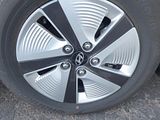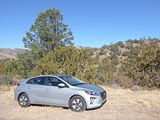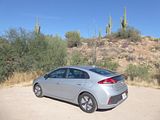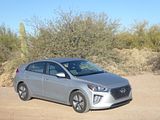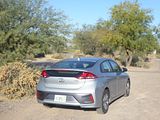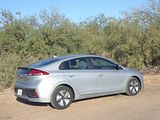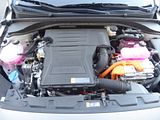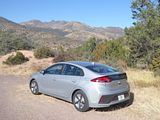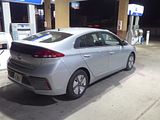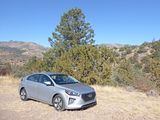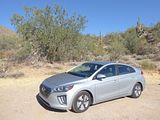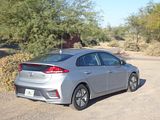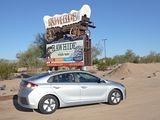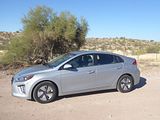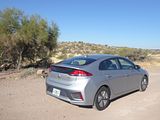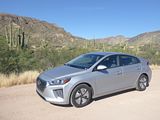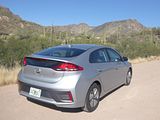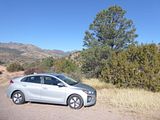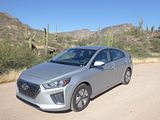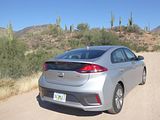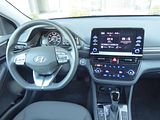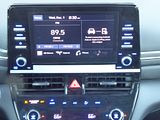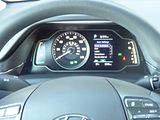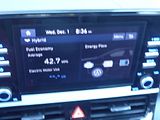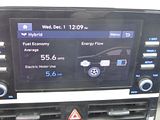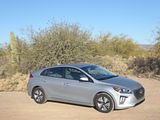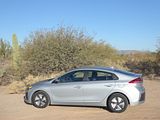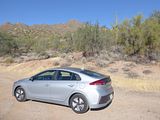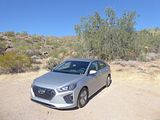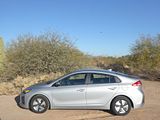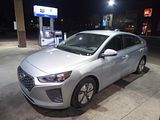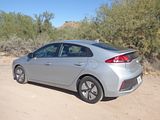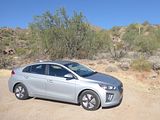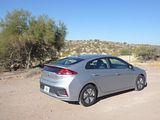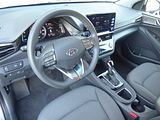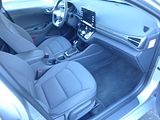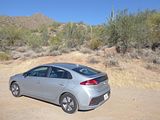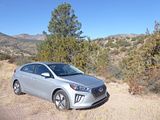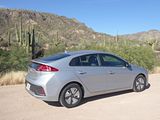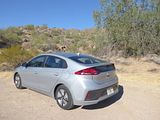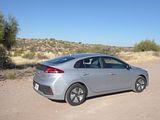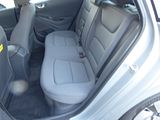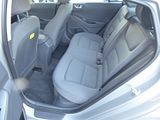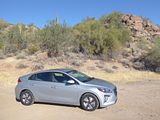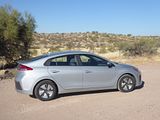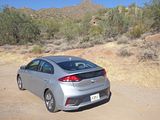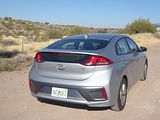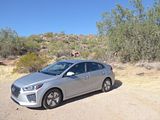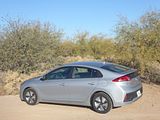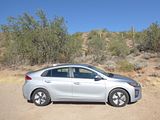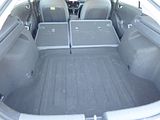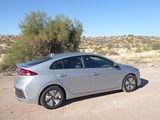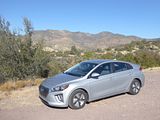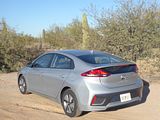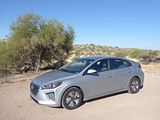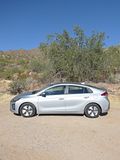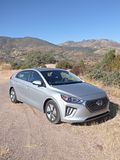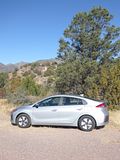In the last couple of decades, the benefits of hybrid technology, where a battery combined with an electric motor is used to augment the power of a combustion engine have become increasingly apparent and appreciated by customers, regulators and even the automotive manufacturers themselves. There is barely a volume car producer these days who has not applied the technology in some way to their products, but if one make stands out above all others, probably, it is still Toyota, who persuaded so many of us with their innovative Prius that this was the way to go in a quest for greater efficiency, better fuel economy and lower emissions. After the first generation and rather anonymous looking saloon of 1997, the Prius has always and intentionally looked somewhat unconventional, and whilst that can sometimes be an advantage in a market where cars increasingly look the same, when the current fourth generation car launched in 2015, many opined that Toyota had gone too far and the car was now just bizarre to behold. Hyundai must have smiled a wry smile, knowing that they had a direct rival just months away from production, with less contentious looks but all the goodness of hybrid technology in a similar sized and priced car. The Ioniq launched at the 2016 Geneva Show in three versions: an all-electric model, a plug-in hybrid and a “traditional” hybrid, this latter being, not surprisingly, the cheapest of the three derivatives. This was the first time that a manufacturer had offered all three technologies in a car that was in all other respects identical.
The Ioniq – whose name, apparently is a portmanteau of Ion and Unique – is Hyundai’s first mainstream hybrid car, the start of Hyundai’s aim to have 22 ‘eco-friendly’ cars on sale by 2020: 12 hybrids, six plug-in hybrids, two electric vehicles and two fuel cell vehicles. It was never intended to be available with just a traditional petrol engine, Hyundai having other cars in the range which offer that. A core design tenet of the Ioniq’s engineering was to keep it simple, and it’s certainly rather simpler than Toyota’s Prius. This simplicity is partly intended to keep the costs down. Hyundai also saw other issues that have been criticised on hybrids such as the Prius and Honda Insight which they wanted to eradicate. Most important of these was eliminating the droning and ‘elastic’ sense of acceleration associated with CVT hybrid transmissions and ideally, Hyundai wanted to engender a degree of driving pleasure as well as making the car as refined as possible. The first money-saving move was to build the Ioniq on a modified version of the new platform underpinning the latest Elantra model. As well as getting a bespoke multi-link rear axle (and having much of the suspension components made of aluminium), the rear half of the floorpan is modified to incorporate three different battery capacities. This hybrid version gets a small 1.5kWh battery that is slotted into the same space under the rear seats as the fuel tank. The latter is squeezed down to a 45-litre capacity. Work on refinement included upgraded insulation behind the dash and in the A and B-pillars, thicker window glass and a sound-deadening film on the windscreen. The plug-in hybrid and EV versions of the Ioniq get progressively bigger battery packs that are squeezed under the boot floor and, in the EV, also replace the fuel tank. The new hybrid transmission also has simplicity on its side. At launch, Hyundai said they were the first company to build a DSG gearbox that shifts quickly enough to be used in conjunction with a petrol engine and the electric motor. The six-speed ’box uses dry clutches, gets Sport and Eco settings and is said to be 95% efficient in transferring the engine’s power. The petrol engine is a development of the company’s existing Kappa petrol family, which is said to be 40% thermally efficient – unusually high for a petrol motor and matching the latest Toyota petrol units for theoretical efficiency. The exterior styling deliberately avoids Prius-like individuality. It’s quite modestly sized – not dissimilar to the Mk2 Honda Insight – and there are a few obvious ‘eco car’ markers such as the large, blank grille, sizeable LED running lights and the twin-window hatchback. The interior is similarly toned down and restrained. The Ioniq has been on sale for around 4 years now and whilst it has yet to usurp the Prius in sale volumes or even the minds of the public who equate Hybrid to Prius, it has sold decently well, and certainly better than Honda’s second generation Insight which also set out to provide an alternative to the dominating Toyota. Having driven the Prius in all but its latest generation, I was intrigued to test out Hyundai’s implementation of the hybrid concept and I finally got my chance to test one when I found an example parked up in the Gold Choice area at Hertz’ Phoenix Sky Harbor airport location.
The Ioniq starts purely on the battery, so there is no sound at all. You simply need to follow the lights, to know that the car is primed and ready to move. Once underway, the petrol engine kicks in, generally quite smoothly though you will usually be aware as to exactly when it does so. This is a 1.6 litre four cylinder unit which puts out 104 bhp which is not a lot for a car of this size, but it is augmented by and estimated 43 bhp from the electric motor. That’s not enough to make this Hyundai fast, but the car has sufficient acceleration to be able to keep up with the flows of traffic, and when I took it on one of my favourite test routes out of Phoenix which has some long and quite steep inclines on it, the car coped reasonably well. On the move, the car works out when to use the petrol engine and when to use the battery and there is a live graphic in the instrument display which shows just how the Ioniq shuttles between using engine power, battery power and coasting (when heading downhill), revealing a transmission that’s extremely reactive and quick-thinking. That six speed DSG automatic transmission does indeed seem to be as clever as Hyundai says, and I found it would work effectively, moving relatively seamlessly between the ratios. Engine noise remains quite muted, until you work the engine hard, but there is a surprising amount of road noise to endure. Of course, the rationale for a hybrid is fuel economy and in the 230 miles of my testing, the car told me it had averaged 67 mpg (US). When it came to filling it up, it needed just 3.6 gallons which computes to 63.88 mpg US or 76.3 mpg Imperial, suggesting it was not quite as full on collection as it was on return.
The Ioniq is not really intended for the enthusiastic driver, but there were no significant issues that I uncovered and the car was ultimately effortless to drive and felt quite planted and predictable, albeit it perhaps more at home on urban roads than out in the countryside and the hills. The steering is decently weighted though there is not all that much feel, and in this regard it is certainly preferable to the last Prius I drove, the Hyundai’s main rival. The Ioniq handles tidily with a tendency to understeer if you manage to go fast enough into the bends but driven more in the way that its maker expects you will, then it simply goes where you point it with ample grip and not much in the way of body roll. More importantly, the Hyundai rode nicely on its relatively small and high profile 196/65 R19 tyres. The brakes worked well, something which is not always that easy to achieve where there I regenerative braking involved as is the case here. Not surprisingly, there is an electronic parking brake. The Ioniq comes with an array of the latest safety features, some of which are more welcome than others. Lane Keep Assist, which is the one that few people like, proved easy to turn off which is something I did almost immediately. There were no real issues with visibility. There is no rear wiper, which could be a problem at times, though when it is not raining or snowing, then rear visibility is generally good as there two 2 pieces of glass with the rear spoiler in between them, In any case, you get the rear camera that has been mandated on all US market cars since 2018, so judging the back of the car is quite easy.
You can tell that Hyundai have made an effort with the interior of the Ioniq, with a dimpled surface to the dash top and a bit of stitched leather used as trim as well as judicious use of metal effect inlays, but the door casings are hard and there is getting away from the fact that this does not really feel like a premium car, but then it is not pretending that it is. In the Blue trim of the test car there is a plastic moulded steering wheel, which is quite chunky in size, and with a slightly flattened bottom to it. The instruments are utterly conventional, with a large analog dial speedometer dominating the cluster and smaller gauges to the right for the fuel level and a large one to show the usage and charge for the battery. You can customise the display using buttons on the right of the steering wheel spokes. There are a pair of column stalks. The 8” colour infotainment screen is set high in the centre of the dash and looks almost as if it has been stuck on as an after-thought, but at least it is easy to read and reach. It has some physical buttons on either side, which makes it easy to operate. As well as AM/FM radio, there is Apple Car Play and Android Auto and you still get the increasingly rare CD slot. Beneath this is a gloss panel for the climate control with a couple of knobs and the rest being digital touch pads to operate it. Overall the appearance is one of relative simplicity that is easy to use. This car, as seems to be the way increasingly with Korean cars, has an extensive repertoire of chimes and bongs that start to annoy pretty quickly.
Blue trim means that you get cloth seats in slate grey. Adjustment is all manual and thankfully, that does include the means of lowering the seat, which is something I nearly always want to do. Seat height adjustment is also offered for the front seat passenger, not something you always get in an entry level trim car. There is also a telescoping column, with the wheel moving in/out and up/down. There is a good amount of room here, with plenty of clearance for your head and the seat proved generally to be comfortable.
Space in the rear is reasonable, with just about leg room for those who need it even when the front seats are set well back. Headroom was just sufficient to avoid my head coming to contact with the rooflining, despite the slightly sloping shape of the car. Whilst there is no central tunnel to speak of, the centre console unit, which is quite sizeable, does come well back, to a middle seat occupant would find that they needed to sit with their legs well apart. There is a single net on the back of the front passenger seat and there are small pockets on the doors for odds and ends.
The battery is under the rear passenger seat which means it does not reduce boot capacity, so the luggage area is big and quite deep, and wide across the very back of the car, though the wheel arches do have quite a narrowing effect. As is often the case with US spec cars, there was no load cover. You have to go for a higher spec Ioniq to get one. There is some space under the floor for bits and pieces. The rear seat backrests are asymmetrically split and drop down to create a flat and long load bay. Inside the cabin, there is a good sized glovebox, there are pockets on the doors, and an area in front of the gearlever, as well as a surprisingly small armrest cubby.
The 2021 Hyundai Ioniq Hybrid is available in four trim levels: Blue, SE, SEL and Limited. The Blue starts you out with: 15-inch wheels; Keyless entry with push-button start; 8-inch touchscreen; Apple CarPlay and Android Auto smartphone integration (with wireless connectivity); Six-way adjustable front seats. Standard driver aids on all Ioniq Hybrids include the following: Lane keeping assist (steers the Ioniq Hybrid back into its lane if it begins to drift over the lane marker); Driver attention warning (issues an alert if sensors determine you are becoming fatigued); Automatic high-beam headlights (automatically operates the high beams depending on whether approaching vehicles are detected); Forward collision warning with automatic emergency braking (warns you of an impending collision and applies the brakes in certain scenarios). Extra niceties are added to the Ioniq Hybrid in the SE trim, such as: LED daytime running lights; Heated exterior mirrors; Upgraded driver information display; Paddle shifters with regenerative braking controls; Leather-wrapped steering wheel; Heated front seats; Power-adjustable driver’s seat; Additional USB port in centre console; Blind-spot monitoring with rear cross-traffic collision warning (warns you if a vehicle is in your blind spot during a lane change or while in reverse). With the SEL trim level you get an upgraded exterior look plus helpful technology: LED headlights; 17-inch alloy wheels; LED cabin lights; Wireless smartphone charging pad; Sunroof; Upgraded forward collision avoidance system; Adaptive cruise control (maintains a driver-set distance between the Ioniq Hybrid and the car in front). The Limited is the top of the line model, and this adds quite a few more features to the spec list. These include: Power-folding exterior mirrors; 10.25-inch touchscreen (deletes the wireless functionality for Apple CarPlay and Android Auto) with a Harman Kardon premium audio system and Integrated navigation system; Leather seats; Cargo cover; Front and rear parking sensors; and Hyundai’s Highway Driving Assist (combines adaptive cruise control with steering assist to help keep the Ioniq Hybrid in its lane).
I think Hyundai have hit the proverbial bull’s eye with this car. Its looks, whilst modern and fashionable enough, are not in the wacky category like its Toyota rival, it drives nicely enough and is supremely economical. There’s space for four people and their luggage, the Ioniq is nicely finished, and given Hyundai’s reputation and track record likely to prove reliable, and in the US there is a 10 year warranty just in case it is not. Blue trim is a bit on the meagre side, so an SE or an SEL would probably be a better bet. Whilst we still all worry about whether all-electric really can be our future, like the legislators are telling us, here is a car for the here and now which will tick so many boxes for all bar the die-hard enthusiast.

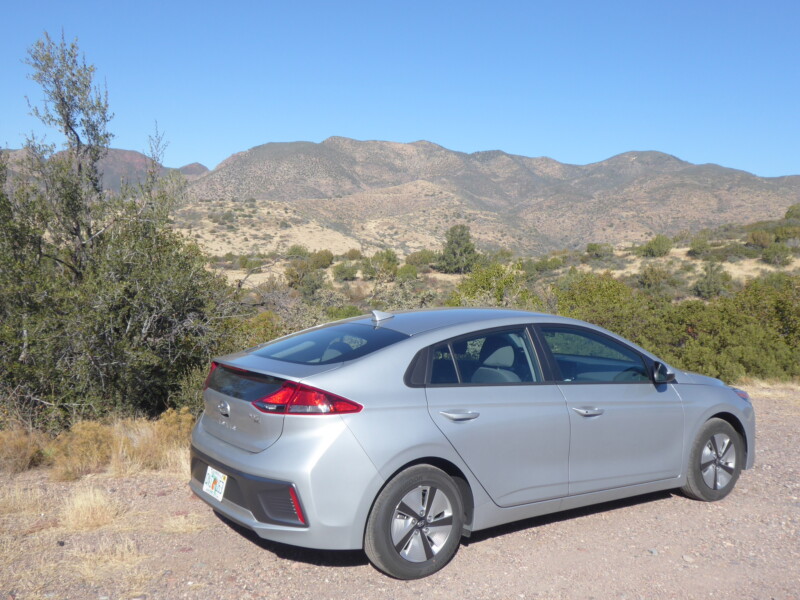

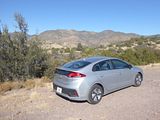
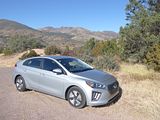
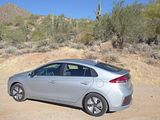
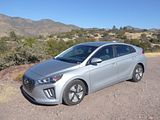
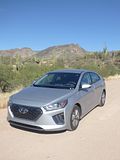
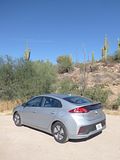


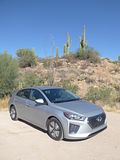
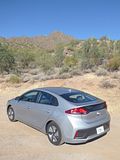


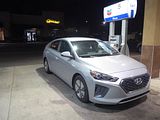
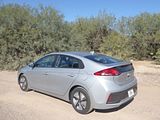
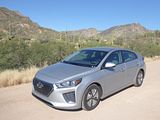
.jpg?width=180&height=160&fit=bounds)
